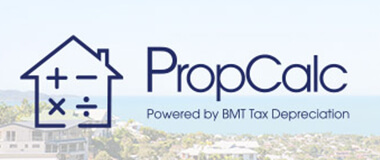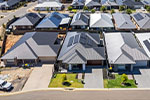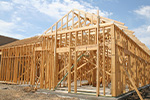Australians are reaping returns on renovations
The construction industry accounts for approximately 10% of Australian gross domestic product, employing over 1.2 million individuals who each play a part in building the homes that we have such an acute shortage of in Australia. Though improved from a year ago, building approvals are still trending low, with close to 2,000 construction companies filing for bankruptcy in the last financial year alone.

Long-term solutions to strengthening the industry will include embracing more innovative, locally manufactured construction methods, modular systems made off-site and more sustainable, locally sourced materials. However, the revision of costs associated with implementing these systemic changes will unfortunately take time to filter down to new property investors.
As an alternative, many Australian investors are shying away from building new and moving towards renovating, with Australians choosing to spend an estimated $2.55 billion on property renovations in 2023 alone. Not only does a renovated property produce an increase in market and rental value, but the renovations also increase the depreciation deductions, strengthening the investor’s cash flow.
More than 66% of depreciation schedules prepared by BMT have had additional renovation or improvement works completed. Even if the improvements were completed by the previous owner, a new owner can still claim the qualifying works now and in the future.
Typical renovations that have shown a high return on investment and generated substantial depreciation deductions include upgrading kitchens and bathrooms, adding an extra room, security upgrades and solar panels.
Case study
Let’s consider a typical case study of an investment property valued at $720,000. Rental income prior to the renovation was $600 per week ($31,200 per year). The investor completed a $95,000 renovation in 2023, including a kitchen makeover, a bathroom makeover and the installation of solar panels.
Newly installed plant and equipment assets included an oven, cooktop, dishwasher and rangehood, as well as sixteen solar panels with an inverter. The investor also installed fixed and structural items such as kitchen cabinets, benchtops, a bath, toilet and tiles.
A post-renovation valuation found the property was now worth $980,000 and a property manager’s rental appraisal also found the owner could earn $890 per week ($46,280 per year).
Table 1: Property values before and after renovation
| Original | After renovation | Increase ($) | Increase (%) | |
| Property value | $720,000 | $980,000 | $260,000 | 36% |
| Rental income p.a. |
$31,200 | $46,280 | $15,080 | 48% |
As well as increasing the value of the asset, the rental income generated from this investment property has increased from $31,200 per year to $46,280 per year, giving a 16% return in the first full year on the $95,000 invested in the renovation.
Below is a summary of the investor’s tax scenario before and after the renovation. An additional $15,080 per year ($290 per week) has been added to the investor’s cashflow before adding the additional tax deductions resulting from the renovation.
Table 2: Investor’s tax scenario before and after $95,000 renovation
| Depreciation scenario before and after $95,000 renovation | |||||
| Scenario BEFORE renovation | Scenario AFTER renovation | ||||
| Annual income ($600 x 52 weeks) | $31,200 | Annual income ($890 x 52 weeks) | $46,280 | ||
| Annual expenses | $53,900 | Annual expenses | $58,100 | ||
| Pre-tax cash flow (income-expenses) | -$22,700 | Pre-tax cash flow (income-expenses) | -$11,820 | ||
| Depreciation allowance | $3,985 | Depreciation allowance | $9,933 | ||
| Total taxation loss (Pre-tax cash flow & depreciation) |
-$26,685 | Total taxation loss (Pre-tax cash flow & depreciation) |
-$21,753 | ||
| Tax refund (tax loss x 37% tax rate) | $9,873 | Tax refund (tax loss x 37% tax rate) | $8,049 | ||
| Annual cost of the investment property (pre-tax cash flow + tax refund) | -$12,827 | Annual cost of the investment property (pre-tax cash flow + tax refund) | -$3,771 | ||
| Weekly cost of the investment property | -$247 | Weekly cost of the investment property | -$73 | ||
| Difference of $174 per week | |||||
*The depreciation deductions in this case study have been calculated using the diminishing value method.
Assumptions: The renovations were paid for by increasing the existing loan and the investor falls into an annual income tax bracket of 37 per cent.
Scrapping is another benefit that comes from a renovation. The removal and disposal of any potentially depreciable works or assets from an investment property can unlock additional deductions. The scrapping value is essentially the unclaimed or undeducted depreciable value of an asset at the time of removal and is calculated as follows:
Scrapping value = original depreciable value minus deducted value to date.
In the case of this renovation, prior works like bathroom tiles, vanity, bath, kitchen benchtops and cabinets are some of the elements that will have residual value that can be ‘scrapped’ and the owners may be entitled to claim the leftover amount in the year they are removed.
The increase in the rental income and value of the investment property after renovations, as well as the depreciation deductions and scrapping that can be claimed on the back of the renovations and improvements, illustrate the financial benefits of renovating an investment property.
We always recommend engaging a qualified, reputable quantity surveyor like BMT Tax Depreciation to complete an onsite inspection that will ensure that a depreciation schedule is compiled with maximised tax deductions for the owner. Request a quote today.



























